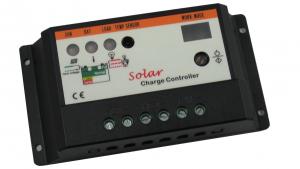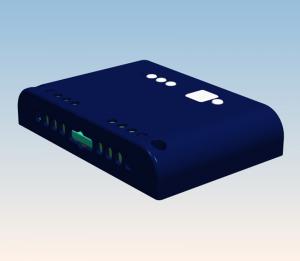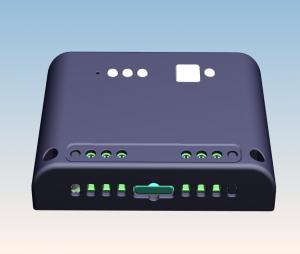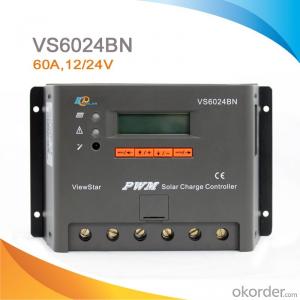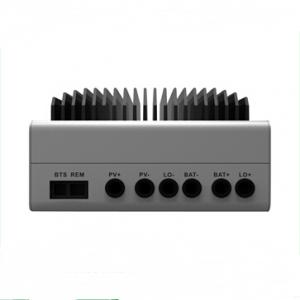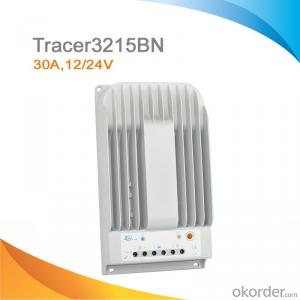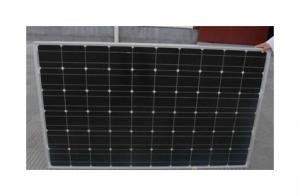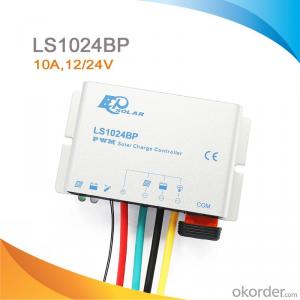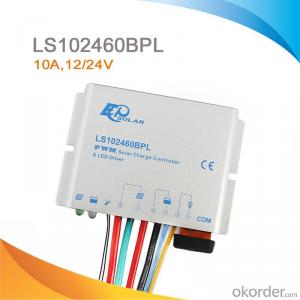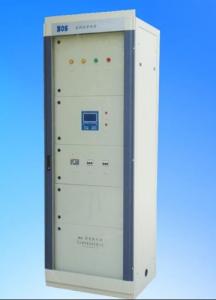P-Series PV Controller for Solar Electric Fence Controllers
- Loading Port:
- Nanjing
- Payment Terms:
- TT/LC
- Min Order Qty:
- 50sets set
- Supply Capability:
- 1-2000sets/month set/month
OKorder Service Pledge
OKorder Financial Service
You Might Also Like
Main features of P-Series PV controller:
Total positive control, multi-channel input matrix control of solar cells (for communication field)
Professional DSP control, charge and discharge point of each parameter can be set to meet the needs of different occasions
Brightest charge voltage detection with "bad back" control to prevent switching into oscillation state
Control circuit and main circuit completely isolated, with a high anti-interference ability
Protection function, operation status, fault LED indicate
LCD display screen, Chinese and English menu display
Clock display function
Variety of passive fault alarm output contact function
Historical records, password protection function
AH cumulative function of power (PV power generation, load power consumption ,battery power and other cumulative functions)
Low-power display state, further reducing its loss
Enables parallel operation of multiple machines
Against reverse battery
Remote monitoring (optional)
Optional Configuration of P- Series PV controller:
RS485/RS232 Remote monitoring;
Increase output control;
Technical Data of P-Series PV controller:
Voltage | 48V | 96V | 110V | 220V | 440V |
Rated current range | 100A~400A | 100A~500A | 100A~800A | ||
Battery input | |||||
Rated input -voltage (VDC) | 48 | 96 | 110 | 220 | 440 |
Under-voltage protection (VDC) | ≤43.2 | ≤86.4 | ≤99.0 | ≤198.0 | ≤388.0 |
Recovery voltage (VDC) | ≥49.2 | ≥98.4 | ≥115.0 | ≥230.0 | ≥460.0 |
Overvoltage protection (VDC) | ≥66.0 | ≥132.0 | ≥150.0 | ≥290.0 | ≥594.0 |
Overvoltage recovery (VDC) | ≤62.0 | ≤124.0 | ≤142.0 | ≤275.0 | ≤560.0 |
Solar input | |||||
Max. open circuit voltage(VDC) | 100.0 | 230.0 | 230.0 | 450.0 | 900.0 |
Max. charge current (A) | 400 | 400 | 500 | 500 | 800 |
Allow PV array points (N) | 10 | 12 | 20 | ||
Float voltage (VDC) | 54.8 | 109.6 | 125.0 | 251.0 | 493.2 |
Overcharge protection voltage (VDC) | ≥57.6 | ≥115.2 | ≥132.0 | ≥264.0 | ≥518.4 |
Charge recovery voltage (VDC) | ≤52.8 | ≤105.6 | ≤121.0 | ≤242.0 | ≤558.0 |
DC output | |||||
Max. output current (A) | 400 | 500 | 800 | ||
Overload capacity | 120% overload 60 seconds off the output / 150% overload for 10 seconds to close the output | ||||
Protection function | Battery over charge, over discharge the battery, the battery reversed,solar cells reversed , counter-attack by night charge , overheating, output overload, output short circuit | ||||
Serial communication | RS485(A、B) | ||||
Mechanical dimensions, work environment | |||||
Size (D x W x H) | 650 x 800 x 2260 | ||||
Reference weight (Kg) | 50 | ||||
Protection level | IP41 | ||||
Max. working altitude (m) | ≤3000 | ||||
Temperature range (℃) | -20 ~ +65 | ||||
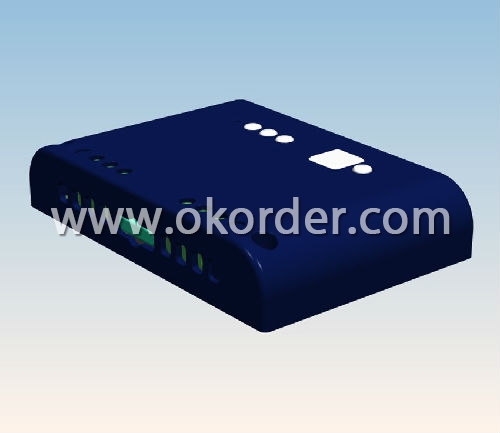
P-Series PV controller
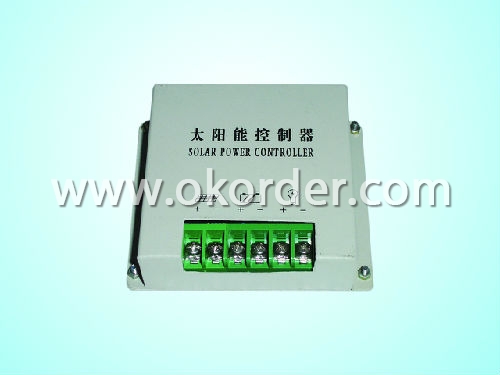
P-Series PV controller
Packaging & Delivery of P-Series PV controller
Packaging : Wooden box or Customized
Delivery: Depends on the quantity or Customized
- Q: How does a solar controller handle voltage fluctuations in the battery?
- A solar controller is designed to handle voltage fluctuations in the battery by regulating and controlling the charging process. When the solar panels generate electricity, the controller monitors the voltage and current output to ensure that it is within the acceptable range for charging the battery. If the voltage from the solar panels is higher than the battery's voltage, the controller will reduce the charging current to prevent overcharging and potential damage to the battery. This is achieved by using a charge regulation algorithm that adjusts the charging current accordingly. Conversely, if the voltage from the solar panels is lower than the battery's voltage, the controller will increase the charging current to compensate for the lower input voltage. This helps to ensure that the battery receives sufficient charging power to reach its optimal voltage level. Additionally, a solar controller may also incorporate a built-in voltage regulator to provide a stable and consistent output voltage to the battery. This regulator helps to smoothen out any fluctuations in the solar panel's voltage output, providing a more reliable and consistent charging current to the battery. Overall, a solar controller plays a vital role in handling voltage fluctuations in the battery by regulating the charging process, preventing overcharging or undercharging, and ensuring that the battery receives the appropriate voltage and current for efficient and safe charging.
- Q: How does a solar controller handle battery temperature monitoring and protection?
- A solar controller handles battery temperature monitoring and protection by continuously monitoring the temperature of the battery. If the temperature exceeds a certain threshold, the controller will take necessary actions to prevent any damage to the battery. This may include reducing the charging current or stopping the charging process altogether until the temperature returns to a safe range. Additionally, some advanced solar controllers may have temperature sensors directly connected to the battery, allowing for more accurate temperature monitoring and protection.
- Q: Can a solar controller be used in a solar-powered water desalination system?
- Yes, a solar controller can be used in a solar-powered water desalination system. The solar controller is responsible for regulating and optimizing the energy flow from the solar panels to the system, ensuring efficient operation and protecting the batteries from overcharging or discharging. In a solar-powered water desalination system, the solar controller would play a crucial role in managing the energy supply to power the desalination process, making it an essential component for effective and sustainable operation.
- Q: Is it necessary to have a solar controller for a small solar system?
- Yes, it is necessary to have a solar controller for a small solar system. A solar controller helps regulate and control the charging and discharging of the batteries in the system, ensuring optimal performance and preventing overcharging or deep discharging, which can damage the batteries. Additionally, a solar controller provides important information about the system's performance and helps protect the system from various electrical issues, making it an essential component for a small solar system.
- Q: How does a solar controller regulate the charging process?
- A solar controller regulates the charging process by monitoring the voltage levels of the battery and the solar panels. It controls the flow of current from the solar panels to the battery, ensuring that the battery is charged optimally without overcharging or undercharging. The controller also prevents reverse current flow from the battery to the panels during periods of low or no sunlight. Overall, it acts as an intermediary between the solar panels and the battery, maintaining a stable and efficient charging process.
- Q: Can a solar controller be used with solar-powered medical equipment?
- Yes, a solar controller can be used with solar-powered medical equipment. A solar controller helps regulate the charging process of a solar panel, ensuring the proper voltage and current are supplied to the equipment's batteries. This helps protect the batteries from overcharging and damage, while maximizing the efficiency of the solar power system.
- Q: Can a solar controller be used with solar microinverters?
- Yes, a solar controller can be used with solar microinverters. The solar controller helps regulate and optimize the charging and discharging of the batteries in a solar system, while the microinverters convert DC power from individual solar panels into AC power for use in the electrical grid. Both components work together to ensure efficient energy generation and utilization in a solar power system.
- Q: What is the maximum power consumption of a solar controller?
- The maximum power consumption of a solar controller typically depends on its model and specifications. However, most solar controllers have a relatively low power consumption ranging from a few milliwatts up to a few watts.
- Q: Can a solar controller be used with a solar-powered security camera system?
- Yes, a solar controller can be used with a solar-powered security camera system. A solar controller helps regulate and optimize the charging of batteries connected to solar panels, ensuring efficient power management for the camera system.
- Q: How does a solar controller handle battery under-temperature protection?
- A solar controller handles battery under-temperature protection by monitoring the temperature of the battery and adjusting the charging parameters accordingly. If the battery temperature drops below a certain threshold, the controller reduces the charging current to prevent damage to the battery. This helps to maintain the battery's performance and prolong its lifespan.
Send your message to us
P-Series PV Controller for Solar Electric Fence Controllers
- Loading Port:
- Nanjing
- Payment Terms:
- TT/LC
- Min Order Qty:
- 50sets set
- Supply Capability:
- 1-2000sets/month set/month
OKorder Service Pledge
OKorder Financial Service
Similar products
Hot products
Hot Searches
Related keywords
